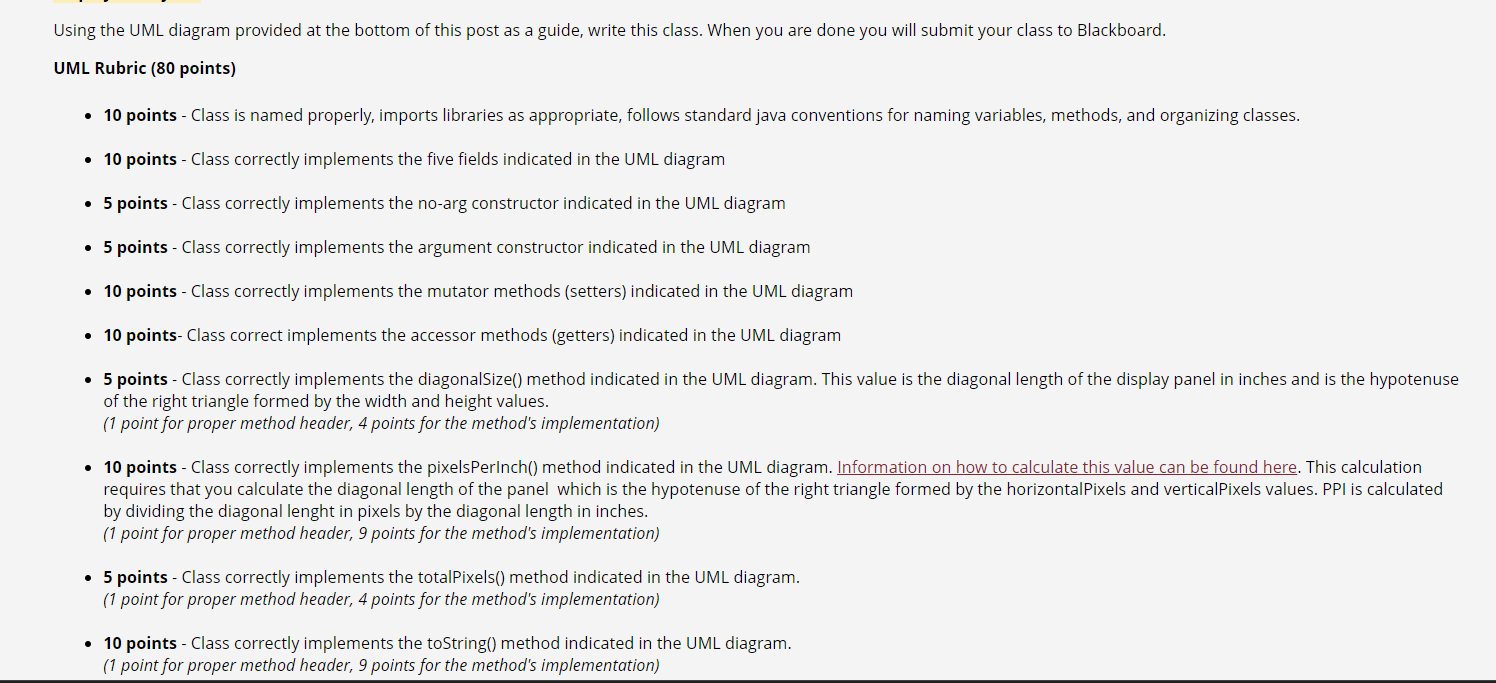Answered step by step
Verified Expert Solution
Question
1 Approved Answer
I need this ASAP thats the code if needed public class TestDisplayPanel { public static void main(String[] args) { // Create instance with default constructor
I need this ASAP
thats the code if needed
public class TestDisplayPanel { public static void main(String[] args) { // Create instance with default constructor DisplayPanel p1 = new DisplayPanel(); // Test setters p1.setManufacturer("Sony"); p1.setWidth(23.53); p1.setHeight(13.24); p1.setHorizontalPixels(1920); p1.setVerticalPixels(1080); // Test toString() method System.out.println("toString() - "); System.out.println( p1 ); System.out.println(); // Create instance with overloaded argument constructor DisplayPanel p2 = new DisplayPanel("Lenovo", 21, 12.5, 2560, 1440); // Test Getters System.out.println( "getManufacturer() - " + p2.getManufacturer() ); System.out.println( "getWidth() - " + p2.getWidth() ); System.out.println( "getHeight() - " + p2.getHeight() ); System.out.println( "getHorizontalPixels() - " + p2.getHorizontalPixels() ); System.out.println( "getVerticalPixels() - " + p2.getVerticalPixels() ); System.out.println(); // Test diagonalSize() method System.out.println( "diagonalSize() - " + p2.diagonalSize() ); System.out.println(); // Test pixelsPerInch() method System.out.println( "pixelsPerInch() - " + p2.pixelsPerInch() ); System.out.println(); // Test totalPixels() method System.out.println( "totalPixels() - " + p2.totalPixels() ); System.out.println(); // Test toString() method with 2nd instance System.out.println("toString() - "); System.out.println( p2 ); System.out.println(); } } 
Step by Step Solution
There are 3 Steps involved in it
Step: 1

Get Instant Access to Expert-Tailored Solutions
See step-by-step solutions with expert insights and AI powered tools for academic success
Step: 2

Step: 3

Ace Your Homework with AI
Get the answers you need in no time with our AI-driven, step-by-step assistance
Get Started


